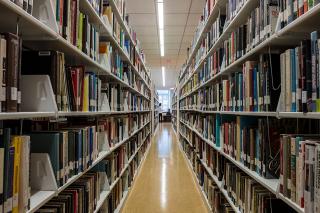In the wake of the COVID-19 pandemic, the School of Library and Information Science master’s and doctoral students wonder: what can we learn from this experience? Five students are researching the effect of COVID-19 on schools, public libraries, and the individual use of online dashboards for gathering pandemic-related information.
“The Effects of the COVID-19 Pandemic on the Operations of Public Libraries in US”
By: Emily Remer (2020 doctoral cohort)
“The pandemic brought massive changes to libraries around the world,” said Emily Remer. She noted the lack of quantitative data on the subject, especially on small public libraries. “The literature review focused on how libraries were reacting to the pandemic, mostly through anecdotal stories.”
Remer gathered data from six large and six small libraries from three northeastern and midwestern states, contacting 72 public library directors with an online questionnaire regarding the impacts of the pandemic on operations, circulation, and programming and how libraries adapted their services.
“The anecdotal stories were confirmed by the data,” said Remer, showing that libraries, once closed, adapted quickly to find ways to reach patrons through curbside pickup and online programming, among other innovations. “People seem to appreciate physical materials and virtual programming,” and she suspects that communities will expect both virtual and in-person services in the future.
“Small libraries reopened more quickly with fewer restrictions, showing they might be slightly more agile than larger counterparts. But the impact of budget cuts will have a greater impact on smaller libraries, who already work with a small staff.” Reductions in staff hours and fewer resources may also impact the rate of burnout among library staff.
“The 1918 influenza pandemic also closed libraries and impacted library services,” said Remer. “Libraries need to start planning now for the next public health crisis, using what they learned in the COVID-19 pandemic.”
“Public Library Services and Library Leadership During the COVID-19 Pandemic in the Greater Boston Area”
By: Sarah Callanan ‘22MS and Tessa Erickson ‘21MS
Library reopening decisions have varied nationwide. In their project, Sarah Callanan ’22MS and Tessa Erickson ’21MS noted that this was true even among neighboring libraries within the same network. The researchers analyzed the COVID-19 policies and services offered during the pandemic as posted on 40 library websites and interviewed eight library directors about their experience as leaders during that time.
Based on their research, Callanan and Erickson proposed that public libraries will be rooted in a new hybrid service model characterized by a combination of COVID-19 service elements, a shift towards more robust digital collections, and traditional in-person services. The directors shifted their leadership strategies to a crisis-centered approach at moments during the pandemic, but these changes appeared to be temporary; what was more revealing was the larger impact the role of communication had on their leadership approaches.
Additionally, the researchers noted that communication also changed in the workplace as COVID-19 stay-at-home orders resulted in the exclusive use of digital communication channels for remote work collaboration. Virtual technology became a social connector, allowing library staff the opportunity to communicate more frequently than if they had been in the building. Coworkers got to know one another on a deeper personal level, which ultimately brought them closer together and created a culture of closeness and understanding in the workplace.
“The Information Journey of Boston Latin School Teachers during the Covid-19 Pandemic”
By: Deeth Ellis ‘06MS
PhD candidate Deeth Ellis ’06MS focused her research project on the school where she is a librarian. “We went home in March of 2020,” Ellis recalled, “and virtual teaching started overnight.”
The teachers became online curriculum designers for their virtual classrooms and were faced with an unprecedented number of information tasks. Ellis focused on teachers’ information-seeking habits, what techniques they used, and the roles of technology and social networks.
“Teachers needed information to engage students and resources to assess students,” said Ellis, “those were the most frequently reported needs. Google and YouTube were the top resources for teachers to search for information.” Teachers who implemented the use of online educational resources like EdPuzzle, FlipGrid, and Hoopla expect that they will continue to use these resources in the future.
“There were frequent obstacles encountered,” explained Ellis. “Teachers reported suffering from information overload, and they weren’t always satisfied with the results of their searches. Teachers had varying levels of patience with wading through the information and figuring out what to use.”
Teachers sharing technology and information resources during professional collaborations was a key component to managing information overload. Ellis sees an opportunity for more consistent information technology literacy training in the future to minimize time spent on information seeking and to help with feelings of overload.
“User Experience of COVID-19 Dashboards”
By: Yishan Zhang (2020 doctoral cohort)
The general public’s information-seeking behaviors were at the forefront of Yishan Zhang’s research project. Zhang researched user experience with 19 dashboards offering information on the status of the pandemic.
“We are equipped with technology to be proactive,” said Zhang, “and these dashboards were intended to help people make decisions and take action.” Collecting data about dashboard usage and interviewing users in the US and China shed light on the limitations of many dashboards.
“Dashboards should offer simple data utilization to allow users to make quick decisions,” said Zhang. “Designers often focus on using a lot of data and making them look appealing instead of functional. Dashboards can be better used to trigger user actions like taking vaccines.”

